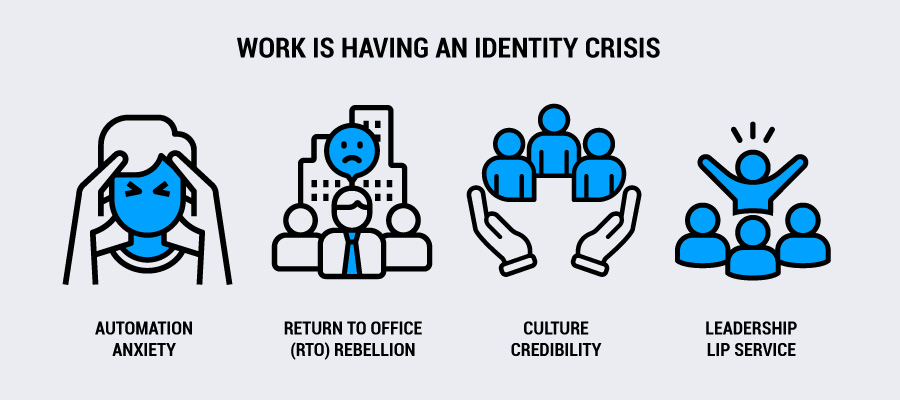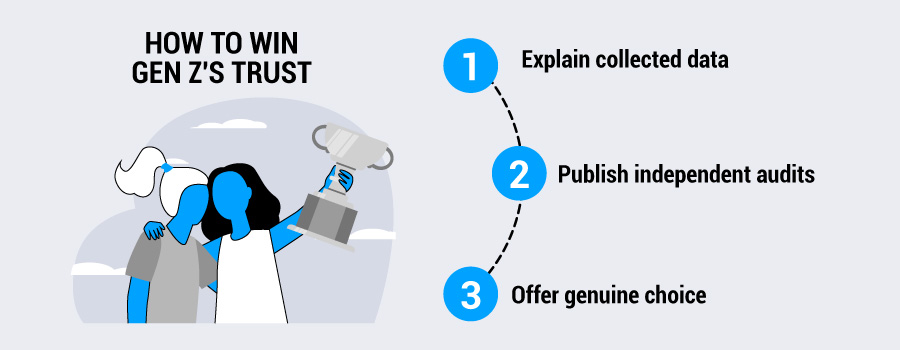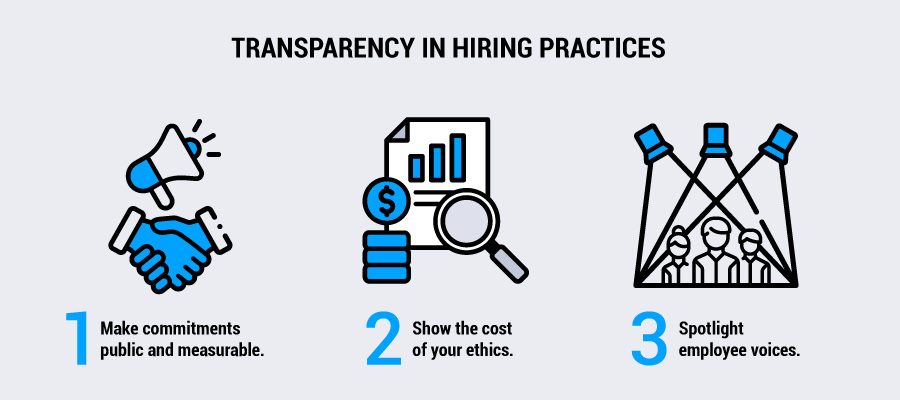James Robbins has been keeping his finger on the pulse of the global job market and the way workforce attitudes toward employment are shifting. He is the Chief Marketing Officer at Fathom, an employer branding agency that focuses on strategies to connect talent and brands.
In this conversation, he shares how employer branding, recruitment, and retention are changing, what it takes to tackle the work identity crisis head on, how transparency has become a trust signal, and the role autonomy should play in the brand itself.
_________
Brunni Corsato: We’ve lived through the peak and maturation of the creator economy, which made personal branding almost a must-have from employees on LinkedIn. How are employers leveraging this mindset?
James Robbins: LinkedIn is no longer just a CV depot; it is a marketplace of individual voices. When an engineer or recruiter shares their perspective, their post can generate up to eight times more engagement than a company page update. Because people trust people, not press releases.
That is brilliant news for employer brands. The employers who see this clearly are the ones encouraging their people to be part of the conversation, not by handing them scripts, but by equipping them with the tools, confidence, and stories that resonate.
At Fathom, this starts with primary research: speaking directly to the talent our clients want to reach. We uncover what really matters to them, then turn those insights into a strategy that evolves with the business.
From there, our creative team builds campaigns and assets that feel natural for employees to share and build upon.
In short: employees are the new creators.
Equip them with clarity, evidence, and stories worth telling, and then trust them to tell it in their own voice. That is how employee advocacy turns authenticity into the most powerful form of marketing an employer can have.
Brunni: What’s the identity and culture crisis work is currently going through? And how do you see marketing and employer branding factoring into it?
James: Work isn’t just wobbling, it’s rewriting its bio week after week. We had a weekly roundup about this, and found that four cracks are spreading under our feet.

- Automation anxiety: Entry-level and even mid-level roles are disappearing before they have had a chance to pay for themselves because management believes AI will do the heavy lifting. Meanwhile, the shiny new jobs require skills nobody has had time to learn. Engineers receive layoff notice invites disguised as catchups (because those shiny new tools will take over everything from specs to QA testing), and only three in ten HR pros feel confident with the AI tools they are championing.
- Return to office (RTO) rebellion: Each fresh mandate sparks another eye roll. A Guardian poll says 38 percent of UK staff feel their stress spike just reading tougher RTO headlines, and Starbucks now labels “flexible” as four days tethered to headquarters.
- Culture credibility: Almost half of employees have toyed with quitting over ethics lapses, and TikTok’s “Gen Z stare” turned glossy value posters into memes overnight.
- Leadership lip service: Executives brag about No-Meeting Mondays while burnout numbers climb past 2020 highs.
None of this is just boardroom theory; it is landing in inboxes, payslips and mental health apps right now.
Employers have to close the gap: by being authentic and data-led, capturing real employee stories, showing leaders the friction points, and publishing a fix-it plan. Then they can brand themselves accordingly. Owning the gap and addressing it beats airbrushing it every time.
Brunni: What are the changes you’re seeing at Fathom in future employees’ expectations from employers? And how does that affect the way employers should build their brands?
James: Job seekers now read employers the way shoppers scrutinize food labels, checking ingredients, expiration dates, and third-party ratings before they buy in. Our scan of five heavyweight 2025 reports showed clear agreement on the pressure points businesses are facing, as well as a few sharp contrasts worth noting.
- AI expectations: Deloitte celebrates AI that augments humans, while Mercer warns of productivity gains outpacing ethics. LinkedIn is bullish on recruiter efficiency, WEF flags displacement risk, and Randstad zeroes in on bias reduction. From our perspective at Fathom, AI belongs in the employer value proposition (EVP), not the small print. Demonstrate how the tech helps your talent, not just the balance sheet.
- EVP design: Deloitte pushes capability-led, future-focused propositions; Mercer says experience-driven and skills-first; LinkedIn centers trust and growth; Randstad demands flexibility, and WEF barely mentions it. We recommend stitching these together into a living EVP that flexes with business cycles yet keeps trust at the core.
- Skills agenda: Everyone shouts “skills-first,” but only Deloitte admits the digital gap is still yawning. WEF sees reskilling mismatched with demand, while Mercer champions experiential learning. We recommend that employers map skills to real projects and fund learning that pays off fast, i.e. within six months.
- Leadership reset: Deloitte coined “stagility” — stable vision plus agile methods — whereas other reports simply note underfunded leadership or rising need for psychological safety. We believe that companies need to train managers to narrate change in addition to implementing it, so every pivot is grounded in data and empathy.
- Internal mobility: Randstad says 81 percent of companies call it a priority; LinkedIn now embeds it in strategy; Mercer links it to retention; Deloitte treats it as agility’s secret weapon. We say employers should build a marketplace for gigs and promotions before employees build one on LinkedIn Jobs.
In short, the experts converge on one message: Talent will follow the brands that combine tech optimism with human realism. Make sure your strategy and every Glassdoor review proves it. Your employer brand already lives on Glassdoor, Indeed, Blind, and a dozen smaller forums.
We’ve argued that employer ratings are the new frontline of trust. That’s why we’ve seen demand for Fathom’s Online Reputation Management service jump in 2025. We help companies manage these channels and be active participants. After all, ignore them and someone else will write your story for you.
Brunni: With the workforce, and especially Gen Z, becoming both more digitally fluent and privacy skeptical, what role does transparency play in building trust with future talent?
James: Seven in 10 Gen Z applicants look up your privacy practices before even checking a role’s salary. That includes data processing with regards to applicants. If they do not like what they find, they disappear from the funnel.
Fortunately, winning their trust is straightforward.

- Explain which data you collect, who can access it, why it helps them, and when you delete it.
- Publish an independent audit once a year; a cookie banner alone will not cut it.
- Offer genuine choice. Enable them to toggle off tracking, ask questions, and request deletion without jumping through hoops.
Companies that communicate updates the way product teams share release notes show respect long before day one.
Digital creators are reshaping privacy norms in an era of visibility and data trade-offs.
Brunni: If we zoom out, this is really a question of autonomy and how much control people feel they have in systems that are increasingly automated. What should brands be doing now to make sure digital autonomy isn’t lost in the name of efficiency?
James: There are several areas that need attention, which come down to human control and attention to detail.
- Design human override points: Make it explicit where human judgement trumps algorithmic output. Scheduling apps, performance scoring tools, and interview-screening bots all need manual veto buttons.
- Unbundle tasks: Korn Ferry finds that 59 percent of talent acquisition leaders are piloting internal talent marketplaces so employees can bid on short projects that match their skills. It’s effective because autonomy grows when people choose work that fits their learning goals.
- Respect boundaries. For instance, European manufacturers like Volkswagen and Bosch disable email servers outside core hours, embodying right to disconnect laws and signalling that efficiency does not trump well-being.
- Treat autonomy as a core brand asset. One way is to publish autonomy indicators alongside engagement and retention metrics in people analytics dashboards.
Brunni: Can you share an example where a brand successfully attracted top talent by making its digital ethics and privacy stance a key part of their employer value proposition? What can others learn from this?
James: Mozilla emphasised its Lean Data principles in recruitment campaigns and on its job pages. After publishing a transparent AI audit and open-sourcing parts of its data pipeline, the company recorded a 160 percent year-over-year increase in engineering applications and a 22 percent jump in offer acceptance rates.
Takeaways for other brands:

- Make commitments public and measurable. Vague statements about “caring” about privacy do not travel.
- Show the cost of your ethics. Mozilla turns down partnerships that conflict with its mission and publicises those decisions. Candidates respect the trade-off.
- Spotlight employee voices. Engineers blog about privacy challenges they solved, turning technical wins into recruitment magnets.
Brunni: Looking ahead, what mindset shifts do you think employers need to make to lead in this new hiring landscape? Any emerging tools, practices, or frameworks you’re excited about?
James: The short answer: ditch the single-track ladder. Careers now zig zag through projects, not rungs. Move from “jobs” to “problems,” from annual surveys to live feedback, and from ladders to lattices.
Tools that help:
| Legacy mindset | 2025 mindset | Illustrative tool |
|---|---|---|
| Hire for jobs | Curate portfolios of problems | Skills-based marketplaces such as Gloat and Fuel50 |
| Annual engagement survey | Continuous listening loops | Real-time sentiment dashboards like Workday Peakon |
| Linear career ladder | Lattice of gigs and learning sprints | Degreed career pathways module |
| Policy checklists | Algorithmic guard rails | Open source bias metrics (Civic AI Charter) |
Brunni: Final thought?
James: Think like a curious anthropologist: Count what matters, challenge assumptions often, and keep a sense of humour for the plot twists ahead.
______
James Robbins is the Chief Commercial Officer and Chief Marketing Officer at Fathom. With more than 20 years of experience in digital marketing and employer branding, he helps organisations connect talent and brand through evidence, creativity, and strategy. At Fathom, James champions the use of primary research to uncover what talent really wants and translates those insights into dynamic employer value propositions.

